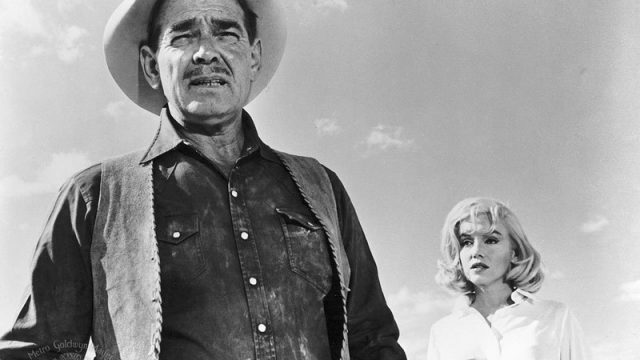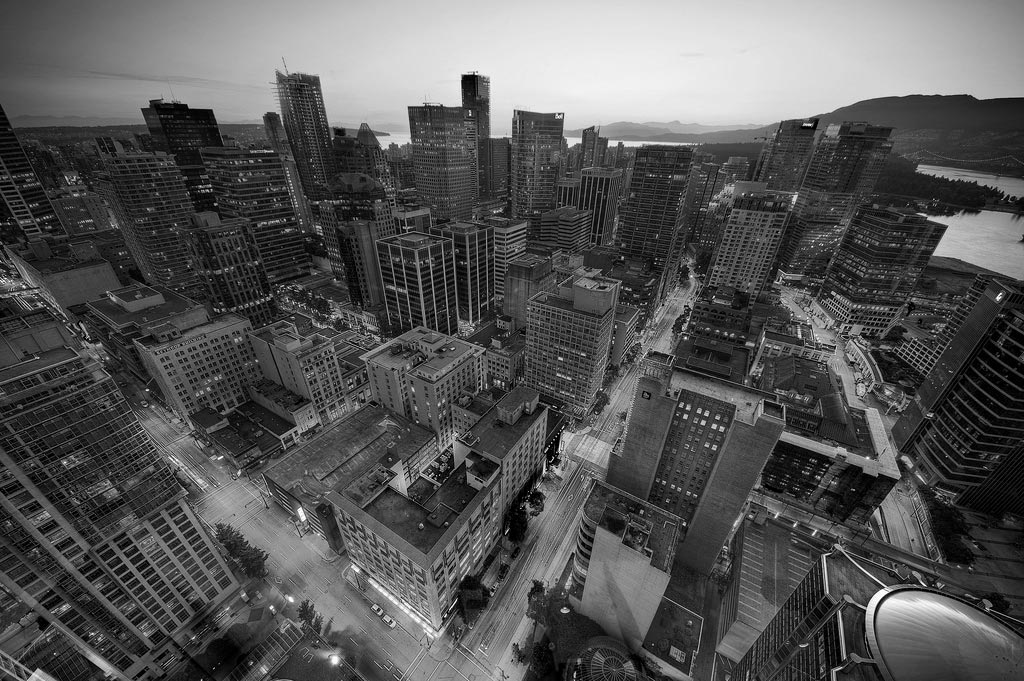The Misfits epitomizes a certain type of Hollywood modernist aesthetic: a film about Big Ideas that draws on the cultural capital of the old studio system. Written by the prestigious playwright Arthur Miller as “a valentine” to his wife Marilyn Monroe and directed by John Huston, The Misfits is certainly memorable in how it takes a modernist approach to depicting the traditional Western through a constellation of star actors: Monroe, Clark Gable, and Montgomery Clift, and with strong support from Eli Wallach.
By evoking the lost promise and ongoing cost of Western expansion, The Misfits envisions post-war America as a fun-house mirror of more typical Hollywood fare about emergent social frontiers, such as the pursuit of corporate ladder-climbing. Taking the motif of alienation that buttressed films such as Rebel Without a Cause (1955) and transplanting it to the Nevada desert, The Misfits shows us a darker side of the macho cowboy myth by aligning it with a disturbing final scene of animal cruelty.
At times, the pacing appears almost lethargic, as if the conditions of the film’s making had bled onto the screen. Miller and Monroe’s marriage was exhausted: they’d divorce right before the film’s premier in 1961. Managing her stress by being heavily medicated throughout the shoot on prescription pills and alcohol, Monroe had difficulties getting to the set on time and remembering her lines. Besides the delays and disruptions caused by Monroe, the declining health of Gable and Clift and the extreme heat of the Nevada desert were also contributing factors.
Miller, who had markedly little screenwriting experience, devises not a love triangle, but a rather convoluted quadrangle. The newly-divorced Roslyn (Monroe) is courted by Gay (Gable), a veteran cowboy and confirmed bachelor, Guido (Wallach), his best friend and widower, and Perce (Clift), a rookie from the rodeo circuit.
Roslyn is the sun around which the three men orbit. They all claim that they need her, each, in a similar speech, telling her that she’s a “life force.” Surely that’d be strange to hear in a traditional Western, and it sounds more as if Miller is channeling the Actors’ Studio than any frontier sage. In particular, it saddles Monroe with a difficult challenge: how do you perform the role of a cosmic influence? Miller’s leaning on the symbolic in scripting the interactions among these wayward drifters results in any number of scenes where the action tends to lag behind the dialogue.
In time, we hear all of the characters’ damaged backstories. The present is receding and the plot keeps turning inwards and looping back, a sort of No Exit (1944) with sagebrush. Having the clearest vision and most awareness, Gay still can’t crucially discern how the frontier landscape has changed, but, then again, neither can we, as Huston shoots primarily in close-ups, giving us precious little of the scenery we’d expect to see in a traditional Western.
Miller intends to build the action to the closing set-piece. Just as soon as Gay has made a provisional home for Roslyn and himself from a house that Guido abandoned on the outskirts of town, he then recruits her to join him, Guido, and Perce in a lengthy trek to the canyons to capture and sell wild mustang horses.
Turns out it’s a very bad idea for a romantic date – the night under the stars the next day becomes a scene that resembles grind-house cinema. Nothing if not brutally honest, at least with Roslyn, Gay is compelled to tell her what they’re really up to, which is to consign these horses, the last of their breed, to a fate as dog food. For Gay it’s how he stays free of the prison of “wages,” and why he refuses to identify with the horses’ plight. For the moment, he overlooks the biggest symbol Miller has dropped right in front of him and us: independent cowboys, like the horses, are on the verge of extinction.
Moving us closer into Roslyn’s head space, the film piles on the misery. There are fewer horses than the men had expected, and they’re emaciated from hunger. Chasing them down with a truck is hardly a fair fight. Gay and Perce show off their manly cowboy skills, roping the horses, and when the horses are exhausted, pulling them down, and loosening the ropes just enough so they don’t suffocate as they await their end.
Shot for once against the immense blankness of the desert, Roslyn loses it. We can just barely make out what she”s screaming in the distance,
Horse killers! Killers! Murderers! You’re liars! All of you, liars! You’re only happy when you can see something die! Why don’t you kill yourself to be happy? You and your God’s country! Freedom! I pity you! You’re three dear, sweet, dead men!
After the impressive feat of singlehandedly capturing the last horse, the lone stallion (again, the symbolism is hard to miss), Gay cuts all of the horses loose. He’s come around to Roslyn’s way of thinking, a triumph of her life force – you can practically see it penciled in the margins of the script.
In a speech that anticipates what we’d hear a year later in the revisionist Westerns, The Man Who Shot Liberty Valence, Ride the High Country, and Lonely Are the Brave, Gay mutters,
Damn ’em all. They changed it, changed it all around. Smeared it all over with blood. I’m finished with it. It’s like roping a dream now. I just gotta find another way to be alive, that’s all. If there is one anymore.
Well, if there’s another way of life possible, more likely than not, it’ll involve wages. That doesn’t seem to matter all that much, though, as Gay and Roslyn drive off into the night. While leaving much of what we’ve seen unresolved is the kind of psychological compulsion that’s the stock in trade of modernism, The Misfits rather than serving up its poetry raw, which makes for the most engaging Westerns, serves it up somewhat overcooked.
Sources:
“The film that fate helped make a classic: The Misfits“
Documentary: Marilyn Monroe and the Making of The Misfits


